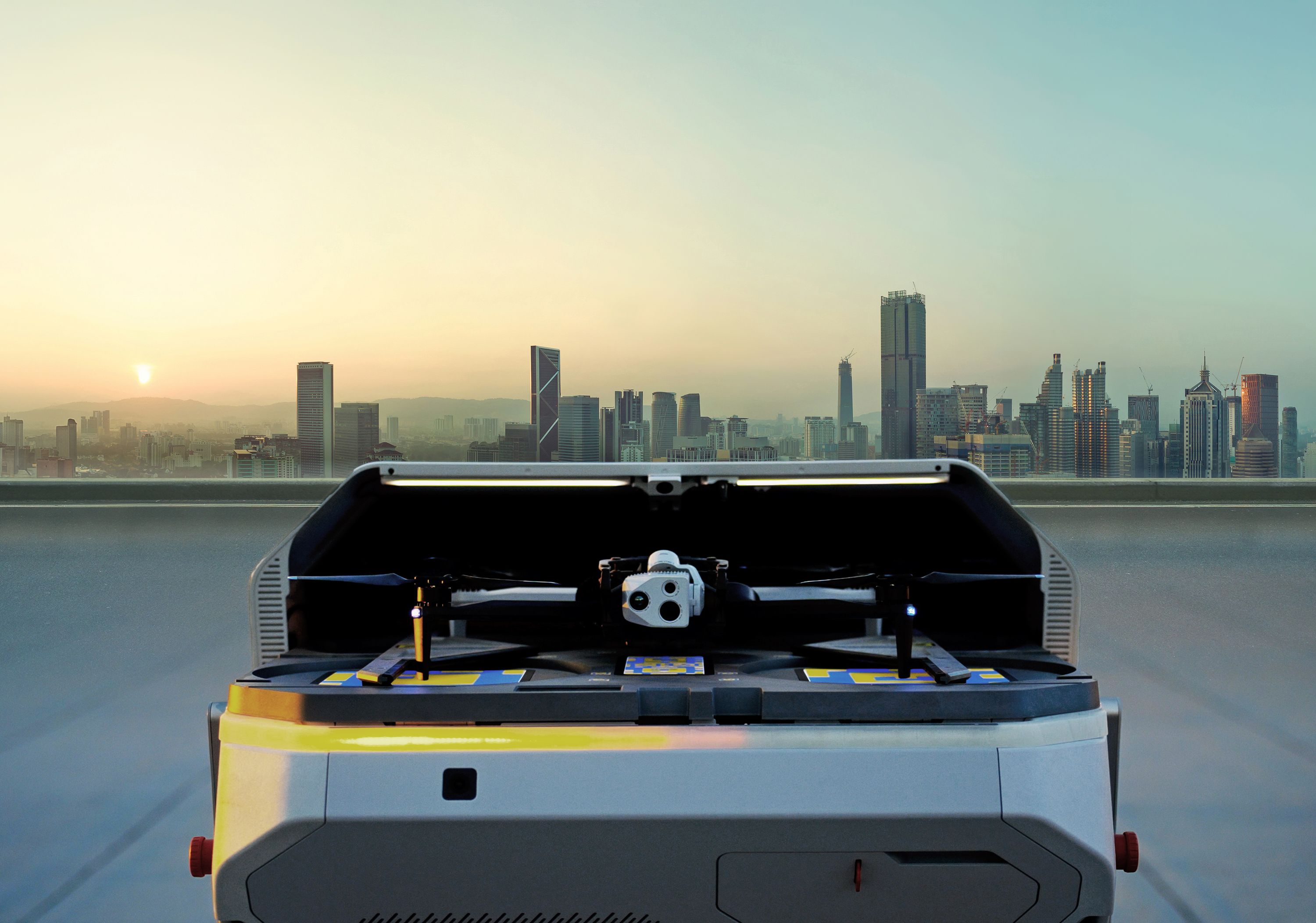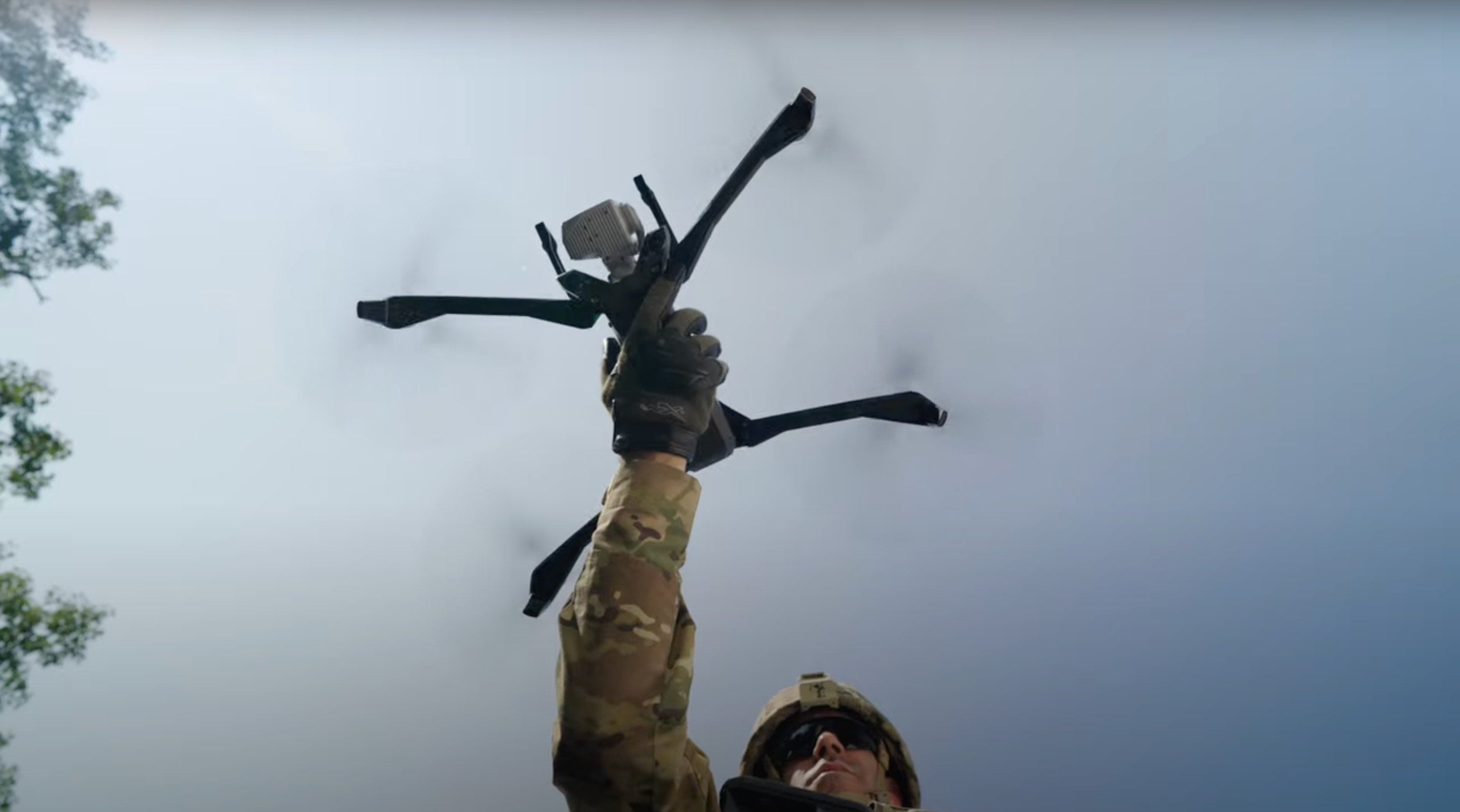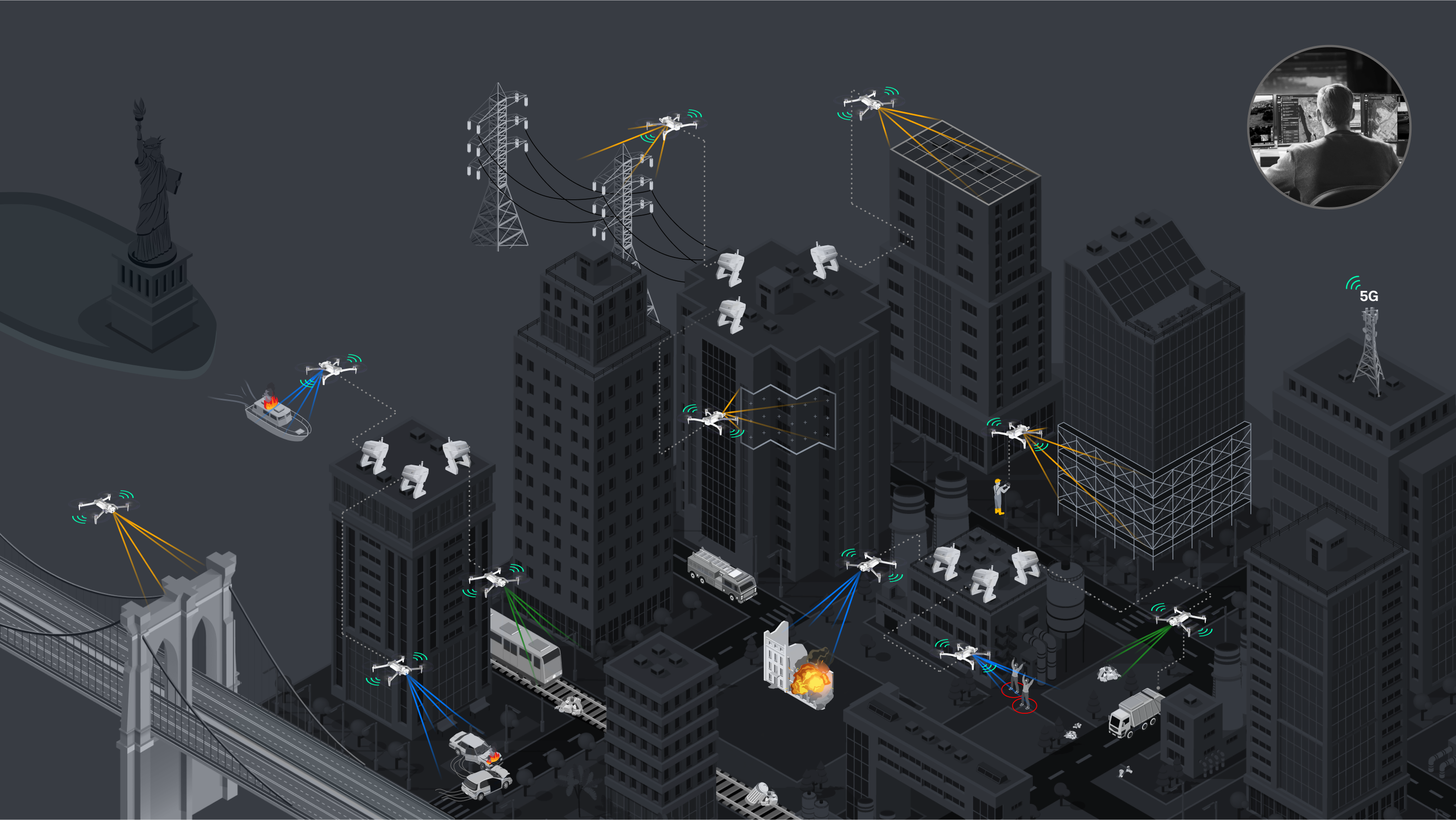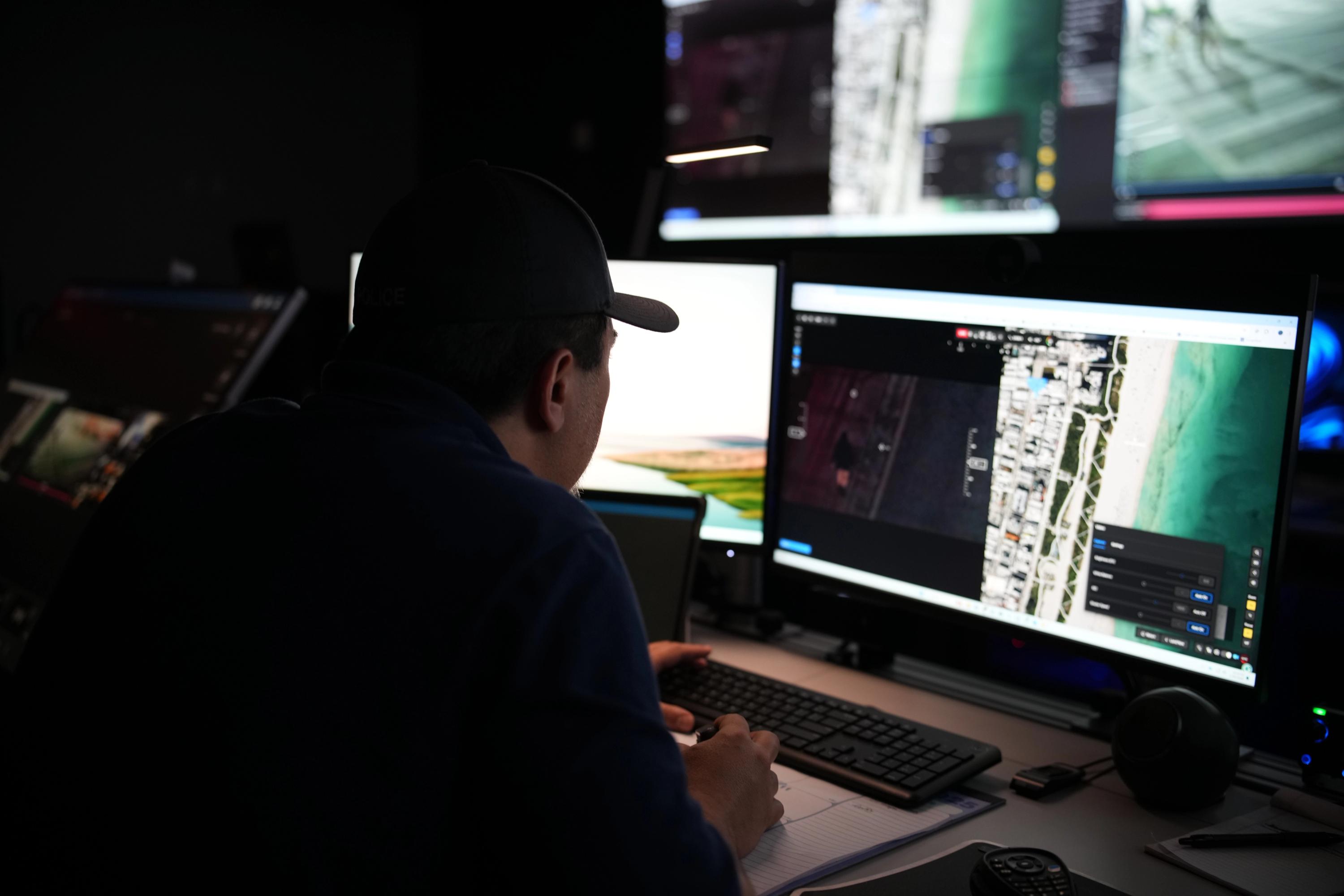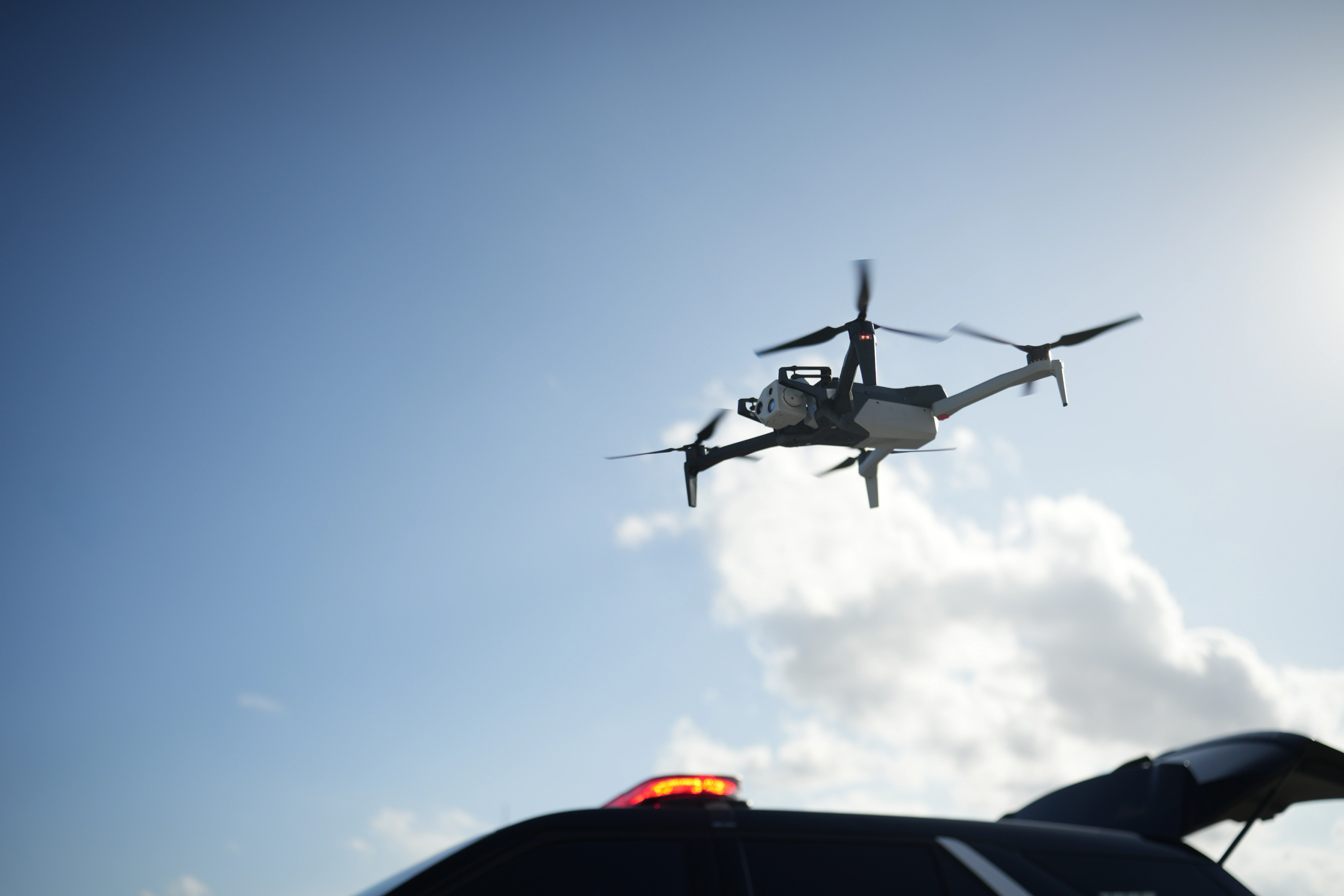Skydio X10 - Redefining Patrol-Led Deployments
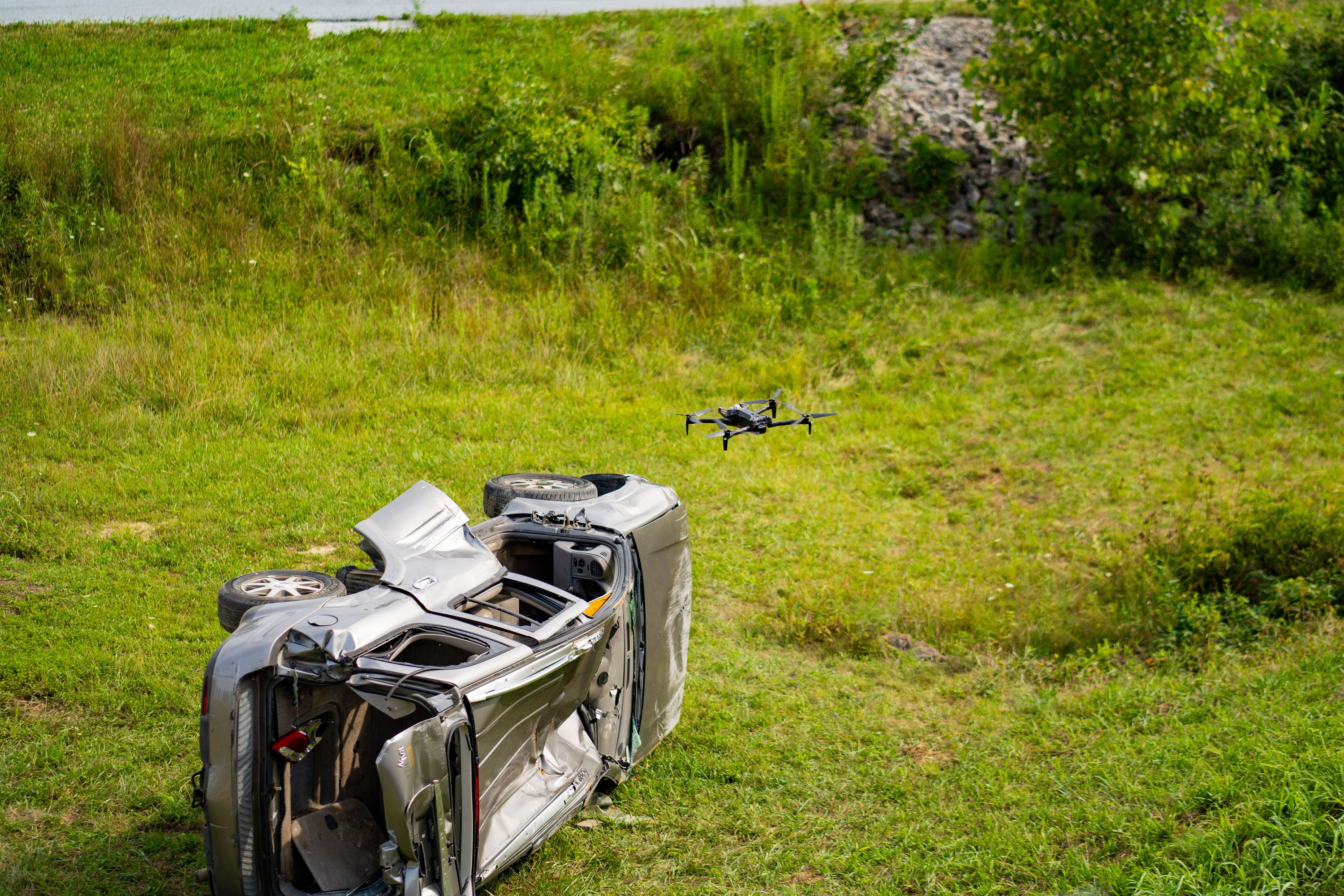
Continued technological advancements have equipped police departments with powerful tools to enhance public safety. Body-worn and dashboard cameras provide transparency and accountability, and real-time crime mapping has empowered law enforcement agencies to allocate resources more efficiently while proactively identifying and addressing crime statistics. More recently, drones have elevated the scope of operations, providing enhanced and real-time situational awareness.
From fast data capture and comprehensive perspectives in crash and crime scene investigations to advanced operational efficiency through patrol-led deployments, the potential to incorporate drones in everyday law enforcement workflows is vast.
For years, Skydio teams have worked diligently to build a drone that meets the needs of the end users. The requests were lengthy, and from a specification standpoint, we were bound and determined to get it right—a vehicle that could withstand inclement weather conditions, better sensors and imagery, longer flight times, etc.
First responders are expected to be a jack of all trades. They are not only crime fighters, but also community liaisons, mediators, mental health advocates, and problem solvers. They are called upon to handle situations that are rapidly evolving and are expected to possess a versatile skill set, all in the pursuit of public safety. It’s extremely important, when adding tools to their kit, that the transfer of knowledge remains easy so they can leverage the technology seamlessly.
Defining standard sensors for public safety
When we think about patrol-led deployments, the main objective is to quickly gain aerial intelligence, with decision-quality data, to increase the safety of both the first responders and the communities they serve.
The telephoto camera on the X10 provides powerful zoom capabilities, which allows operators to closely monitor and track individuals or situations from a safe distance. Let’s take the scenario of a freshly reported stolen vehicle in an area. With a general description of the vehicle, you can deploy the drone to quickly cover a large area searching for a vehicle that matches that description. When you find one, you can use the telephoto sensor to read that license plate from more than 800 ft away and determine whether or not that is the vehicle.
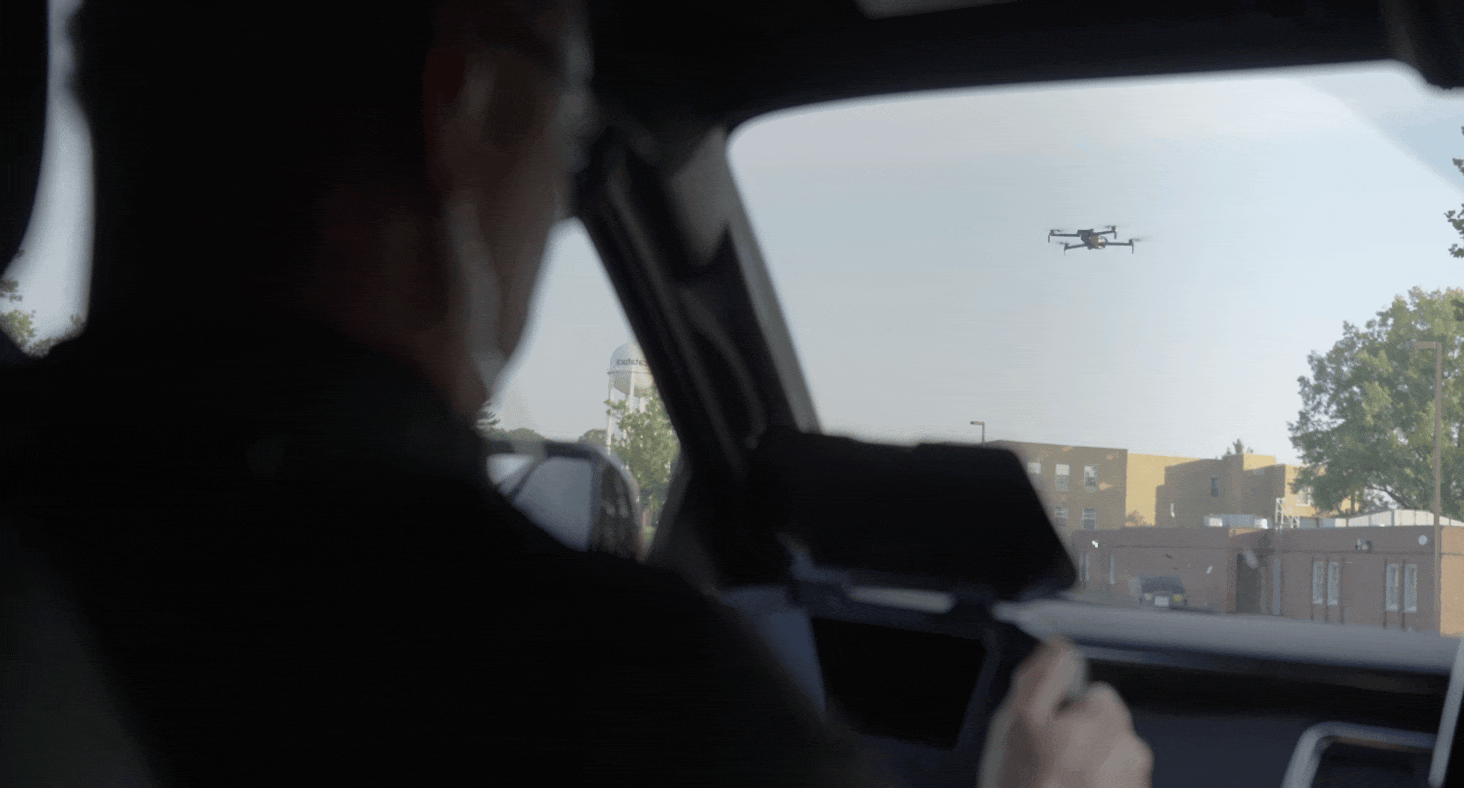
Skydio X10 is equipped with the FLIR Boson+ thermal camera providing the sharpest and most clear images of any other UAS on the market. 40% more sensitive than its predecessor, these precise thermal readings will help you identify a missing person on a warm road or in a smoky, foggy area.
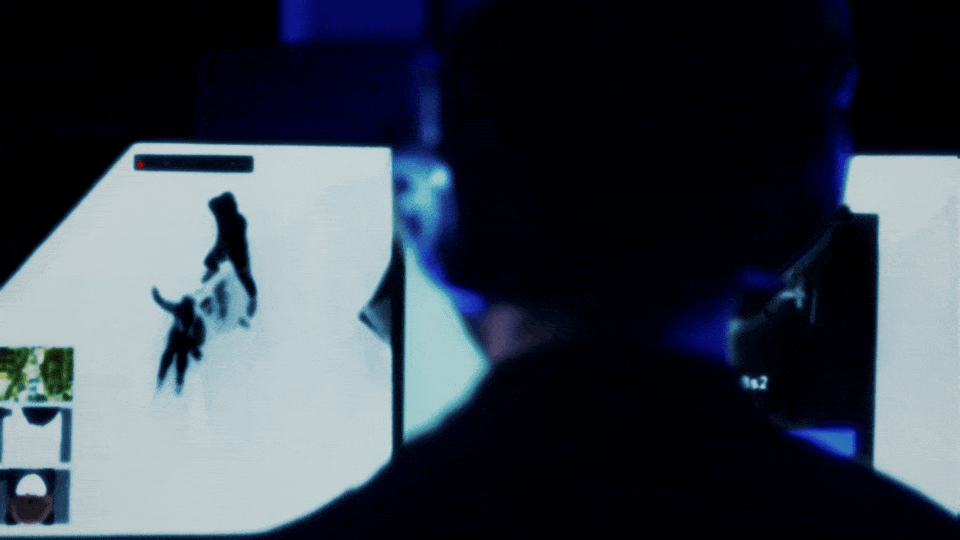
Ready for any call, anytime, anywhere
While there are improvements to connectivity for X10, the most exciting note for law enforcement operations is Skydio Connect 5G. Leveraging cellular coverage, this technology allows for remote operations, Patrol-Led DFR (Drone as First Responder), by way of Skydio Remote Flight Deck.
Picture this. You see a priority call pending on your in-car computer and you’re near the area. However, there aren’t any available units to assist you. In under 40 seconds, you can remove your drone from your patrol vehicle, power it on, and place it in a location ready for launch. Via radio, you can request for a remote pilot, in another location (a Real-Time Crime Center, Fusion Center, Dispatch, etc.) to take control of the drone and assist you from above while you get back to work on the ground. You don’t have to fly it. You can make sound tactical decisions with information from above that you wouldn’t otherwise have, which allows for the time and distance needed to make sure everyone stays safe. This is the power of Remote Flight Deck.
With the ability to launch and/or give control of a drone on scene to a pilot in another location, Patrol-Led DFR provides the ability to scale a drone program further. Patrol-Led DFR builds on the foundation of Patrol-Led Deployments, a program most often associated with the Oklahoma City Police Department
Now, instead of requiring the officer deploying the drone to stay with the controller, by way of Remote Flight Deck, a remote pilot can handle the flying while the officer at the scene can get back to work with the other ground units and still maintain situational awareness of the dynamic event.
Anyone can fly
It’s no question that Skydio’s core autonomy has provided the ability for users to navigate confidently even in the most challenging environments. It has been important for us to create a drone that doesn’t require an expert pilot or a significant cognitive load; first responders need something easy to fly.
At the most basic level, agencies are incorporating drones in smaller specialized units. Whether you are using them for search and rescue operations or crash and crime scene documentation, X10 elevates the capability to capture your data with higher quality and provides additional on-site confidence.
From a documentation standpoint, when capturing measurements, those scenes require a 2D diagram. For more advanced reconstructions, 3D models and point cloud data are necessary for additional forensic analysis. If you haven’t been using Skydio 3D Scan, you’re working too hard.
The X10’s improved compute power allows for both 2D maps and 3D models to be completed on the drone before you clear a scene. Within minutes of data capture, you can view the scene, on the controller, to ensure you have all of the necessary evidence and details needed to generate courtroom deliverables. Gone are the days of hoping you have what you need only to get back to the station and find out later, while processing in software, that you forgot to capture important views.
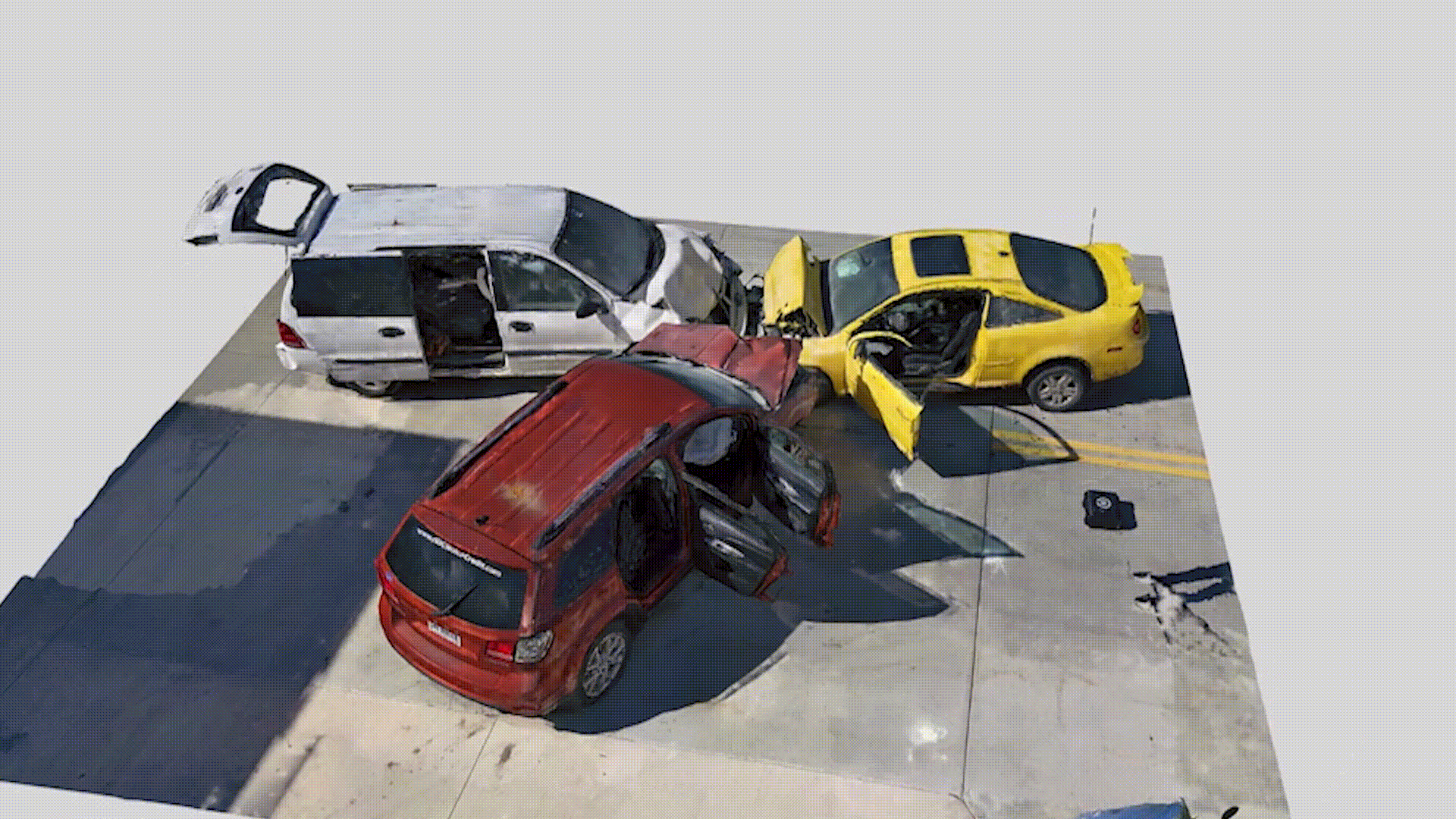
Because crime doesn’t care about location or time of day (or night), historically, flying at night has been a difficult task for law enforcement. The X10 introduces Skydio NightSense, which enables fully autonomous flight, 24/7, including obstacle avoidance, in zero-light environments, making it the only drone on the market that can operate fully autonomously day or night.
Our industry experts
Skydio has built teams of industry experts who have been in your shoes; they are prior law enforcement, from a variety of leading agencies who understand what you do, how you do it, and how drones can help you do it better and safer. Beyond law enforcement expertise, we also have teams with deep knowledge of regulatory affairs and implementation of drone programs, from training to program documentation and waivers, to community transparency. In fact, along with DRONERESPONDERS, Skydio created The 5 C’s: Principles on the Responsible Use of Drones for Public Safety Agencies.
We are committed to helping you build your program and will continue to partner with you along the journey. Skydio X10 isn’t just another tool in the kit; it’s a game-changer in pursuit of a safer community.

Attending the IACP in San Diego? Visit Skydio at booth #3451 to demo our drones and learn why law enforcement agencies across the US and Canada choose Skydio for their teams.
“ "X10– the speed to get it up in the air, the distance it can go, the thermal and the lights– these are all crime-fighting tools."
